1. Outlets and Switches That Feel “Off”
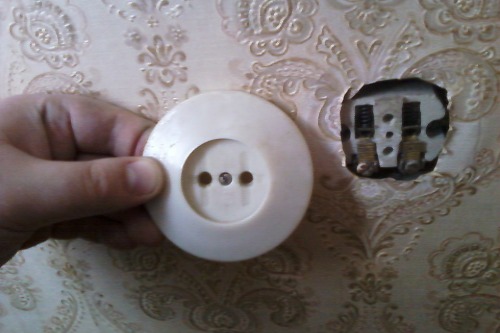
If the cover plates are new but the switches inside feel loose, hot, or make a clicking sound, they probably weren’t rewired—just reskinned. Many older homes have “updated” switches that still rely on outdated wiring behind the walls. Two-prong outlets, oddly placed light switches, or inconsistent outlet spacing can indicate electrical systems that date back to the mid-century or earlier. Just because the faceplate is sleek doesn’t mean the circuitry is modern.
GFCIs (ground fault circuit interrupters) should be present in kitchens and bathrooms per modern code, but older homes may only have them in select spots. And a quick paint job over old cover plates is a red flag someone rushed to update the look without touching the function. You may also notice buzzing dimmers or light flickering under heavier electrical loads. These are signs the home’s systems are aging beneath a fresh surface.
2. Slapped-On Vinyl Siding
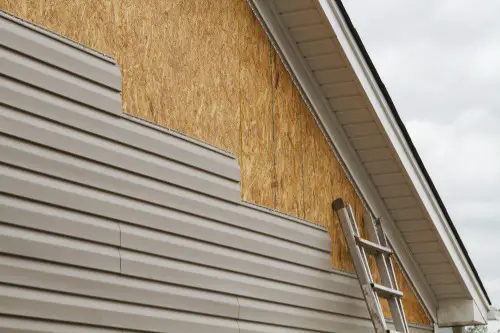
Vinyl siding can make an older home look “fresh,” but it often masks underlying issues. Installed as a quick cover-up, it hides original materials like wood clapboard or brick, which may be rotting or crumbling underneath. If the siding is a style that was popular in the ’90s or early 2000s—especially with faux wood grain or pastel tones—that’s a strong hint the update is decades old. Plus, over time, vinyl fades and warps, revealing its age more than it conceals it.
A savvy buyer might notice inconsistent trim work or mismatched corner seams, both telltale signs it was retrofitted. The siding may also clash with original architectural details, like historic window frames or cornices, which can’t be properly recreated in plastic. And if there’s no visible moisture barrier or venting underneath, it’s possible the home wasn’t brought up to modern building code when the siding went on. That’s not just a style issue—it could be a structural one.
3. Mismatched Flooring Transitions
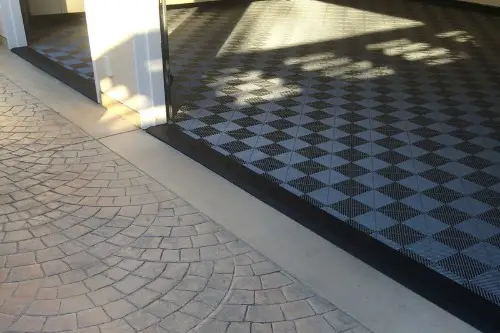
A new kitchen floor meeting worn-out hallway tiles or outdated carpet is a dead giveaway of selective renovations. You’ll often see newer vinyl planks or laminate in one room, abruptly butting up against older materials with jarring thresholds. These transitions suggest piecemeal updates instead of a full remodel, usually done on a budget or timeline. The result is a space that tries to feel new but visually reveals its age with every step.
Inconsistent subfloor levels or squeaks where old meets new are another clue. Builders used to install linoleum over plywood, but modern floors typically require smoother underlayments. When those don’t match, the flooring can shift or warp more easily. And while newer materials might wear better, the sudden shift in tone or style is an architectural breadcrumb leading back to the home’s original era.
4. Refaced but Not Replaced Cabinets
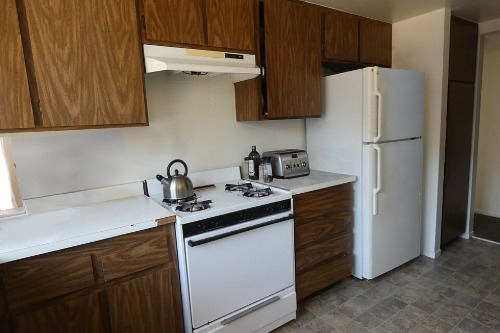
Cabinet refacing—adding new doors and veneer to old boxes—is a popular cost-saving trick in older kitchens. While it may look crisp from a distance, open the doors and you’ll often see dated hinges, particleboard interiors, or shallow shelving. Original cabinetry from the 1970s or ‘80s tends to be less functional and made with thinner materials. Even a fresh coat of paint can’t disguise sagging shelves or outdated hardware if you’re looking closely.
You might also notice awkward layouts that today’s kitchen designers would never use—like a corner cabinet that traps pans or missing drawer banks. Refacing doesn’t solve those problems, it just dresses them up. And if there’s under-cabinet lighting that looks retrofit or poorly installed, it’s likely a cosmetic update rather than a structural one. These shortcuts are like makeup on tired cabinetry: fine for staging, but easy to see through.
5. Bathroom Fixtures That Don’t Quite Match
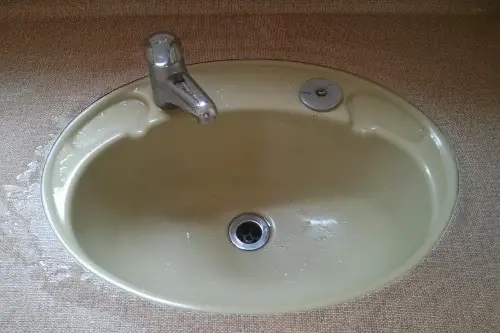
Swapping out a faucet or toilet is a quick upgrade, but mismatched finishes or styles can reveal a patchwork renovation. A brushed nickel faucet next to a 1980s seashell sink? That’s not design—it’s desperation. Often, only the visible parts get changed, leaving older plumbing, drain assemblies, and tiling behind. The result is a room that feels almost current—but not quite.
Light fixtures, towel bars, and mirrors are frequently updated without touching the layout. If a vanity is unusually low or the grout lines are discolored, it’s a sign the bones of the bathroom are much older. Sometimes a new mirror or medicine cabinet is just slapped over the old one, complete with holes in the drywall behind it. These tweaks may fool the casual observer, but anyone paying attention will sense the bathroom’s real age.
6. Old Windows with New Trim
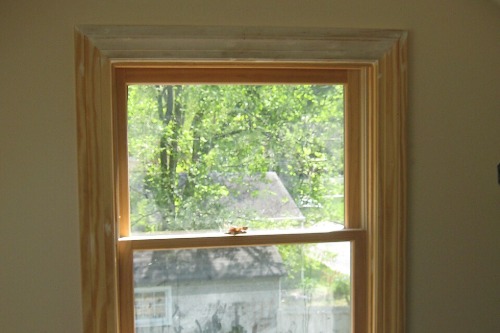
Putting modern trim around original windows can give the illusion of a recent update—but it’s often just a facade. True window replacements involve updating the framing, insulation, and sometimes even the rough opening. But if you spot aluminum or single-pane glass hiding behind fancy wood or PVC trim, that’s a clue the windows are original. Drafts, condensation between panes, or warped sashes only confirm it.
Sometimes the trim is oversized to hide damage or crooked frames, especially in older homes that have settled unevenly. Painted-over window locks or hardware from another era can also give the game away. Energy efficiency aside, these windows may not meet current egress codes for bedrooms or basements. That’s more than a cosmetic issue—it’s a safety one.
7. Popcorn Ceilings with a Paint Job
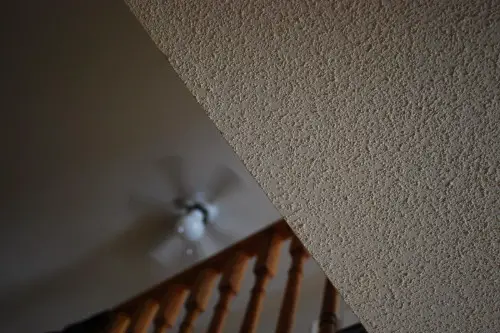
Some homeowners try to modernize popcorn ceilings by painting over them instead of removing them. While this may freshen the color, it often emphasizes the texture and makes it look even more dated. Popcorn ceilings were common from the 1950s through the 1980s, and painted ones are a sure sign someone took the shortcut. If the texture has yellowed in places or looks uneven, it’s likely been there for decades.
Also worth noting: homes built before 1980 may have asbestos in the ceiling texture. If it’s painted, that asbestos is now sealed in, making professional removal more complex and costly. People often avoid scraping them because of the expense or mess, but the result is a ceiling that loudly whispers the home’s true age. Even if it’s clean, it’s still one of the biggest visual cues a house hasn’t been fully updated.
8. HVAC Vents in Odd Spots
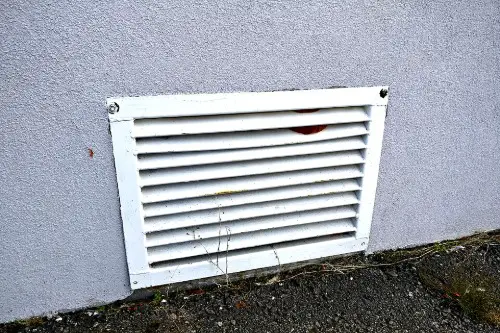
Look down, and you might notice floor vents where you’d expect ceiling registers—or vice versa. Many older homes had ductwork installed as an afterthought, often during mid-century retrofits. If vents seem crammed into corners or placed behind doors, that’s usually a clue the system wasn’t part of the original design. Even when grilles are swapped out for sleek new ones, their placement can still betray a home’s true age.
Modern systems are designed with airflow and efficiency in mind, while older systems simply pushed air where they could. Return vents that are too small or missing altogether are another sign of a retrofit. And if there’s a mix of baseboard radiators and forced air, that points to multiple generations of heating systems layered on top of each other. No matter how new the thermostat looks, those duct placements tell the real story.
9. Painted-Over Tile or Brick

Instead of removing outdated tile or brick, many homeowners just paint over it. It’s a quick way to modernize the look, but it doesn’t erase the style or era of the material underneath. Painted stone or tile often chips, revealing the original color and making the fix look worse over time. That’s especially common in mid-century homes where pink tile or orange brick was all the rage.
In bathrooms, painted tile often means the grout was skipped or sealed improperly, which can lead to moisture issues. In living rooms, a painted fireplace might look cleaner, but if it lacks a proper chimney liner or up-to-code firebox, it’s still stuck in the past. You can often spot these cover-ups by their texture—painted tile is slicker and more uniform than true ceramic finishes. They might look trendy on Instagram, but up close, they’re telling on the house.
10. Retrofitted Recessed Lighting
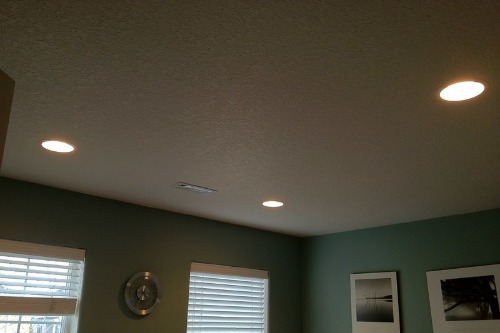
Those neat rows of recessed lights might seem modern, but if they’re spaced oddly or unevenly, they were probably added later. Older homes weren’t built with can lighting in mind, so retrofits often involve cutting into plaster or lath ceilings. If you see patchy ceiling texture or inconsistent spacing, it’s likely the lights are newer than the home. And if they flicker or buzz, they may not have been installed with the correct wiring or insulation rating.
Recessed lights installed without proper air sealing or insulation contact (IC) ratings can leak heat or cause fire hazards in attic spaces. Also, a lack of dimmers or use of incompatible LED bulbs can signal an older system underneath. It’s one thing to pop in a few lights—it’s another to upgrade the infrastructure behind them. Done poorly, recessed lighting ends up illuminating more problems than it solves.
11. Basement “Finishes” That Feel Half-Done
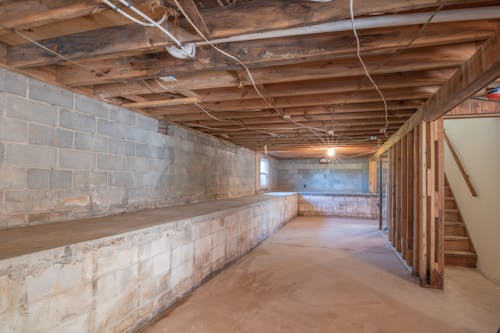
A finished basement can add value, but quick fixes like peel-and-stick flooring, drop ceilings, and drywall over cinderblock often signal rushed updates. These materials might look neat, but they don’t address real basement concerns like moisture, insulation, or structural movement. If you see baseboards lifting, drywall seams cracking, or mysterious dehumidifiers running 24/7, that’s a giveaway. Basements need more than surface-level improvements—they need systems in place.
Older basements often lack vapor barriers, making them susceptible to mold behind those nice new walls. If the ceiling height feels unusually low or there are oddly framed soffits, it may have been cobbled together to hide ductwork or old plumbing. And a lack of egress windows in “bedrooms” down there? That’s not just dated—it’s potentially unsafe and out of code. No matter how new the paint smells, the bones beneath will always rat out the real age.
This post 11 “Fixes” That Quietly Betray a Home’s Real Age was first published on Greenhouse Black.
